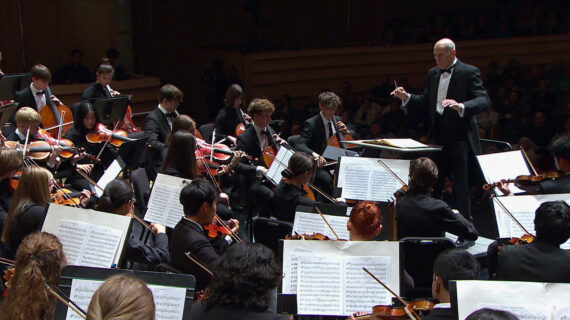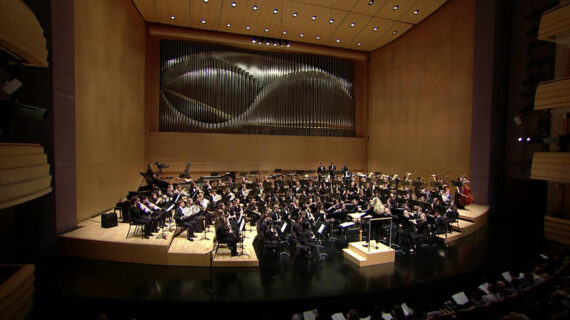Frederica Freyberg:
Speaking of taxes, if your household includes children, you should be seeing some extra money right about now. As part of the American Rescue Plan, payments from the expanded child tax credit started landing in bank accounts late this week. The credit is $3600 a year for children under six years old and $3,000 for six through 17-year-olds. Half of the credit can be claimed when filing income taxes in April. The other half goes into monthly installments through December of this year. So that’s $300 a month for each child under six and $250 for older children. The expanded payments start to phase out at incomes of $75,000 for individuals and $150,000 for married couples. The money is a game-changer according to our next guest. Tamarine Cornelius, is research analyst for Kids Forward. Thanks a lot for being here.
Tamarine Cornelius:
Thanks for having me.
Frederica Freyberg:
So how is this expanded tax credit a game-changer in terms of helping families of lower incomes?
Tamarine Cornelius:
These payments represent an important investment in Wisconsin’s families and Wisconsin’s kids and therefore in Wisconsin’s future. Raising kids, it’s hard, right? And it’s important. And it’s even harder when families have to struggle to make ends meet. So these payments can help families by helping them pay for rent or, you know, catch up on bills or buying school supplies. Whatever families need to thrive, this payment can contribute to that.
Frederica Freyberg:
In all, how many households will be getting this money from the expanded credit, including those who were not eligible before?
Tamarine Cornelius:
So 1.2 million kids across Wisconsin are going to get this credit. So that’s most kids, are going to get this credit.
Frederica Freyberg:
And —
Tamarine Cornelius:
And the advance payments.
Frederica Freyberg:
And I understand there were something like over 350,000 who would not have been previously eligible who are eligible for this.
Tamarine Cornelius:
Right. So there’s three major and temporary changes to the child tax credit that we’re seeing. One is that half the credit is paid out in advance payments, now through the end of the year. And that’s what you alluded to. That’s one change. That’s what hit people’s bank accounts this week. A second change is that the amount of the credit is increased. So it used to be $2,000 and now for 2021 it’s either $3,000 or $3600, depending on the age of your kid and the number of your children. And then the third change is that it used to be, but temporarily changed, that families with low incomes could not get the full amount of the credit and families with the very lowest incomes couldn’t get the credit at all. So families who could make the most use of it helping to make ends meet or getting diapers for their kids, they were shut out of the credit. And that credit — that sort of deliberate locking people out of credit had some very stark racial implications as well. So about half of black and Hispanic kids who are in families that have traditionally faced barriers to higher-paying jobs and to employment, about half of them couldn’t get the full amount of credit, compared to only about a quarter of white kids. So this last change, where the low income or the lowest-income families can now get the full credit, that is going to affect about 350,000 Wisconsin kids who before couldn’t get the full amount of the credit.
Frederica Freyberg:
All of that said, do families have to do anything to see this credit, see this money?
Tamarine Cornelius:
There is two answers to that. Many families do not, that it just comes automatically. So if you filed taxes for 2019 or for 2020 or you filed to get stimulus payment, then the money should come automatically to your bank account. But that’s not every family. And in many cases that’s not the families who might need it the most. So other families who are not described by those criteria, they are going to need to take action to get it. And they — and they should go to childtaxcredit.gov either to make sure you get your credit or for other information about the credit. That’s kind of the hub for where you can find out about the credit and get connected if that’s what you need to do.
Frederica Freyberg:
Thank you for that information. What about the argument that these credits were expanded to include nonworking households, which could incentivize not working?
Tamarine Cornelius:
You know what this is really about is investing in Wisconsin’s future, right? And that’s important for kids in all families and shouldn’t be tied to whether their parents are working or not. When kids are lifted up out of poverty that brings a whole slew of associated positive benefits that improve lives for everyone. It reduces low birth weight births. It lowers maternal stress. It helps kids attend school. It means lower use of drugs and alcohol down the road. It makes kids more likely to go to college. All of these things are linked to improving assistance to families and to say that because families are having a tough time getting a job we shouldn’t make those investments and we shouldn’t improve the lives of those kids in this way that gives a fantastic return on investment is really short-sighted.
Frederica Freyberg:
We need to leave it there. I had a lot more questions but we leave it there. Tamarine Cornelius, thanks very much.
Tamarine Cornelius:
Thanks.
Search Episodes
Related Stories from PBS Wisconsin's Blog

Donate to sign up. Activate and sign in to Passport. It's that easy to help PBS Wisconsin serve your community through media that educates, inspires, and entertains.
Make your membership gift today
Only for new users: Activate Passport using your code or email address
Already a member?
Look up my account
Need some help? Go to FAQ or visit PBS Passport Help
Need help accessing PBS Wisconsin anywhere?

Online Access | Platform & Device Access | Cable or Satellite Access | Over-The-Air Access
Visit Access Guide
Need help accessing PBS Wisconsin anywhere?

Visit Our
Live TV Access Guide
Online AccessPlatform & Device Access
Cable or Satellite Access
Over-The-Air Access
Visit Access Guide
 Passport
Passport








Follow Us